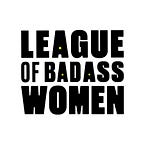Badass Woman of the Month: Kazoo magazine’s Erin Bried
When Erin Bried took her five-year-old daughter to pick out a magazine, she was stunned that dolls, princesses, and stories about makeup were the only options. They left frustrated and empty-handed. Drawing on her almost two decades as a writer and editor, she came up with the idea for Kazoo, a girls’ magazine Vogue called “a magazine for little girls who want to grow up to be president.”
Turns out, a lot of other people were hungry for better content for their daughters. When Bried launched a Kickstarter, she raised over $170,000, becoming the most successful journalism campaign in crowdfunding history. The quarterly print magazine went from 2,500 subscribers in 2016 to 14,000 today, and was nominated for a 2017 National Magazine Award. In its pages, girls can read a comic strip about Josephine Baker’s life, use Morse code to put together a Maya Angelou quote, and learn how to come up with their own discoveries through the scientific method.
Bried spoke with The League of Badass Women about the importance of using language with young girls to avoid reinforcing stereotypes and her commitment to making sure her magazine reflects the diversity of the girls reading it.
What are some ways to talk to girls about skills and strengths without reinforcing stereotypes?
I think so many of the conversations around “girl power,” while well-intentioned, actually end up reinforcing gender stereotypes. The phrase — “See? Girls can do this too!” — is the perfect example of that. It presents the idea that a girl, by being herself, is somehow an exception to the rule. In Kazoo, we talk to girls as if being strong, smart, fierce or loud is a matter of fact, not an anomaly. Because it is. And we never act as if we’re granting them permission to be who they are; they already know that. We’re just creating a space where they’re fully celebrated for it.
How do you think gender roles and gendered divisions of labor are communicated to girls from a young age?
When I was walking my daughter home from school one day, she asked me: “Do you know that outer space is for boys?” This was at a time when she liked to pretend that she was part of a species that lived on Saturn, and here, at 5 years old, she was already being told what she can’t care about. Our kids are bombarded with gender-role messaging from the earliest ages — in the toy aisles, on TV, in the movies, even in kids’ books, where girls are much less likely to play the protagonist. The first step to changing this is simply recognizing it. The second is to support the people who are creating alternative conversations. Kazoo exists because parents want it to exist for their kids, and so they subscribe and tell their friends.
Your magazine has such a richness of diversity. How do you make that a priority for the magazine?
It’s important that this door is open for everyone to walk through — not just white girls. When we decide on what stories we want to cover, and looking for the experts to attach to them, I make an effort to find a diverse roster of experts. It makes the magazine better and richer, but sometimes it’s not always easy. If you search university faculty listings for aerospace engineering or microbiology, you clearly see how the statistics bear out. Sometimes I have to dig a little deeper to find a female expert, but it’s always worth the effort.
If every girl had access to Kazoo, what kind of generation of girls do you envision in the future?
Our tagline is “a magazine for girls who aren’t afraid to make some noise.” I feel like if we can get girls to live by that motto, then we will raise tomorrow’s leaders. Vogue called us “a magazine for little girls who want to grow up to be president.” I’d like to expand that to say “for little girls who want to grow up to be whatever they want and whoever they want, as long as they’re true to themselves and not abiding by some sort of societal rule that tells them how they have to act.”
The fact that your magazine is committed to showing girls as they are — no photoshopping — is inspiring. I remember being as young as nine years old thinking I was overweight. How do you think your work can move the needle in a more positive direction?
The statistics will sink your heart. There are so many discouraging studies about what it’s like to be a girl now. We wanted to talk to girls who are ages five to ten, so we reach them at that younger age before they’re adolescents, before they stop raising their hands in class or before they quit sports. We wanted to catch them early, so when they get to the age where they start questioning themselves, they’ll be on a sturdy foundation. We want our daughters to know we have their back and give them the tools they need. Let’s get out there and change the world together.
-Anna Sterling
